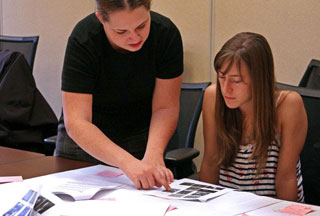later, I assigned students in my visual storytelling class at WVU to create a permanent exhibit at the Memorial. What started out as a class assignment evolved into a community project, now known as the “Kimball War Memorial Project.”
The students researched, designed, sought grant funding and curated a permanent exhibit for the Memorial Building in 2010 entitled “Soldiers of the Coalfields,” which includes an interactive website and Facebook page. The exhibit of images and words tells the story of African American veterans in McDowell County, including migration from the rural South to work in the coal mines, their military service to the nation (including contribution of five generals from five segregated black high schools in the county) and places the local history of McDowell in the larger context of African American experience. The project includes a sensitive exploration of the dimensions of discrimination as well as honoring the successes and accomplishments of black veterans. The students’ work in this experimental class was the subject of a PBS MediaShift story, “Teaching New Forms of Storytelling, From Database Narratives to Quantum Journalism.”
From the outset, “The Kimball Project” (as it has become known) was envisioned to support and collaborate with efforts to preserve the cultural history of black military service, and to promote the Memorial as a national treasure and unique destination for historical tourism that will bring benefits to an economically disadvantaged community. We plan to continue interactive web projects, mobile outreach and innovative wearable technology projects to raise awareness of this vital national historical resource. — Dr. Joel Beeson, Associate Professor, West Virginia University P.I. Reed School of Journalism
 Casey Hofmann, left, and Codi Yeager, right, work with thumbnail images and Post-its to storyboard the touchtable and site.
Casey Hofmann, left, and Codi Yeager, right, work with thumbnail images and Post-its to storyboard the touchtable and site.
